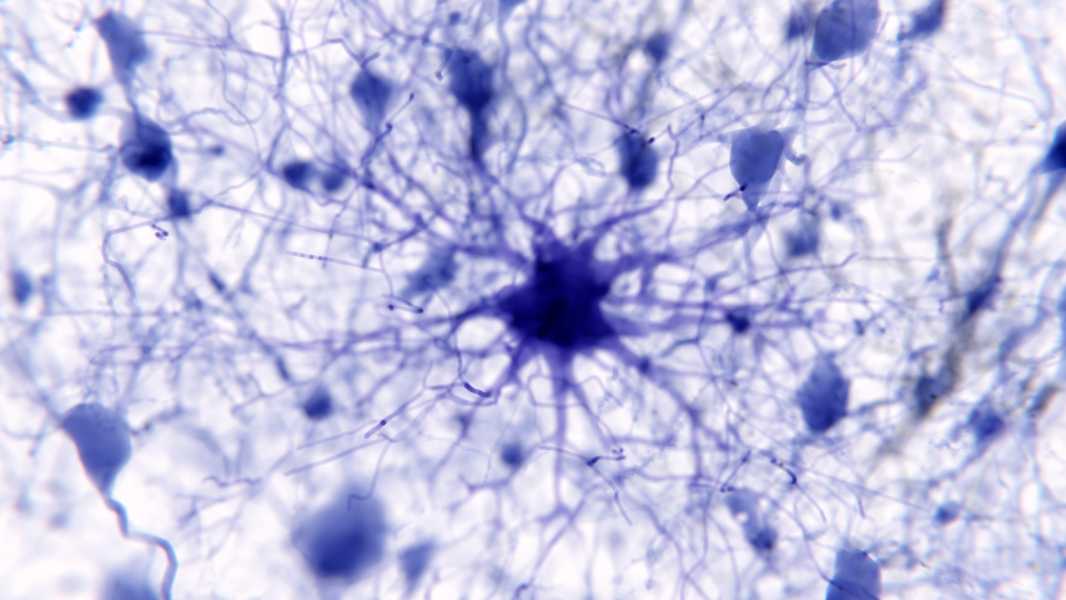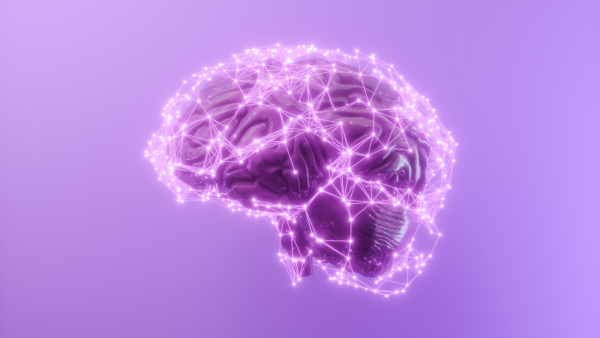
Astrocytes are star-shaped cells in the brain that may play an essential role in memory. (Image credit: JUAN GAERTNER/SCIENCE PHOTO LIBRARY via Getty Images)
For years, researchers believed that neurons were the sole architects of thought and memory in the brain, but new research suggests that another, often overlooked type of brain cell may have a more significant influence on memory than previously thought.
A study published in May in the journal PNAS suggests that these other brain cells, known as astrocytes, may be responsible for the brain's impressive memory, thanks to a newly identified type of network architecture.
Astrocytes are star-shaped cells that perform many functions to keep the brain functioning, including clearing out cellular debris, providing neurons with nutrients, and regulating blood flow. They also have fine, branching structures called processes that wrap around the sites where neurons exchange signals. This wrapping forms what’s called a three-way synapse, a kind of three-way handshake involving two connected neurons and an astrocyte.
You may like
- The brain can “move” between related ideas just as it moves from one place to another.
- Largest ever brain 'connectome' created using mouse that watched 'The Matrix' and 'Star Wars'
- Can adults create new brain cells?
“You can think of an astrocyte as an octopus with millions of tentacles,” said lead author Leo Kozachkov, who was a graduate student at MIT when the study was conducted and is now a postdoctoral fellow at IBM Research in Yorktown Heights, New York. “The octopus body is the cell body itself, and the tentacles are the ‘extensions’ that reach out to nearby synapses,” Kozachkov explained in an email to Live Science.
Astrocytes do not transmit electrical signals like neurons. Instead, they communicate via calcium signaling, creating waves of charged calcium particles within and between cells. Research has shown that astrocytes respond to synaptic activity by changing their internal calcium levels. These changes can trigger the release of chemical messengers from the astrocyte into the synapse.
“These processes act like little calcium computers, detecting when information is transmitted across a synapse, passing that information on to other processes, and then receiving feedback,” Kozachkov said. Ultimately, that chain of messages returns to neurons, which in turn adjust their activity. However, researchers do not yet fully understand what computational functions astrocytes perform with the information they receive from neurons.
To gain deeper insight into this function, Kozachkov and his colleagues turned to machine learning architectures that can map complex interactions between many entities, rather than capturing only simple connections between pairs of units.
Traditional machine learning networks that connect only pairs of neurons can encode limited information, said senior author Dmitry Krotov, a research scientist at the MIT-IBM Watson AI Lab and IBM Research. Because a single astrocyte can connect to thousands of synapses, the team hypothesized that astrocytes might act as intermediaries in communicating across all of these connections. That could explain how the brain achieves its massive storage capacity, they suggested.
“U
Sourse: www.livescience.com





